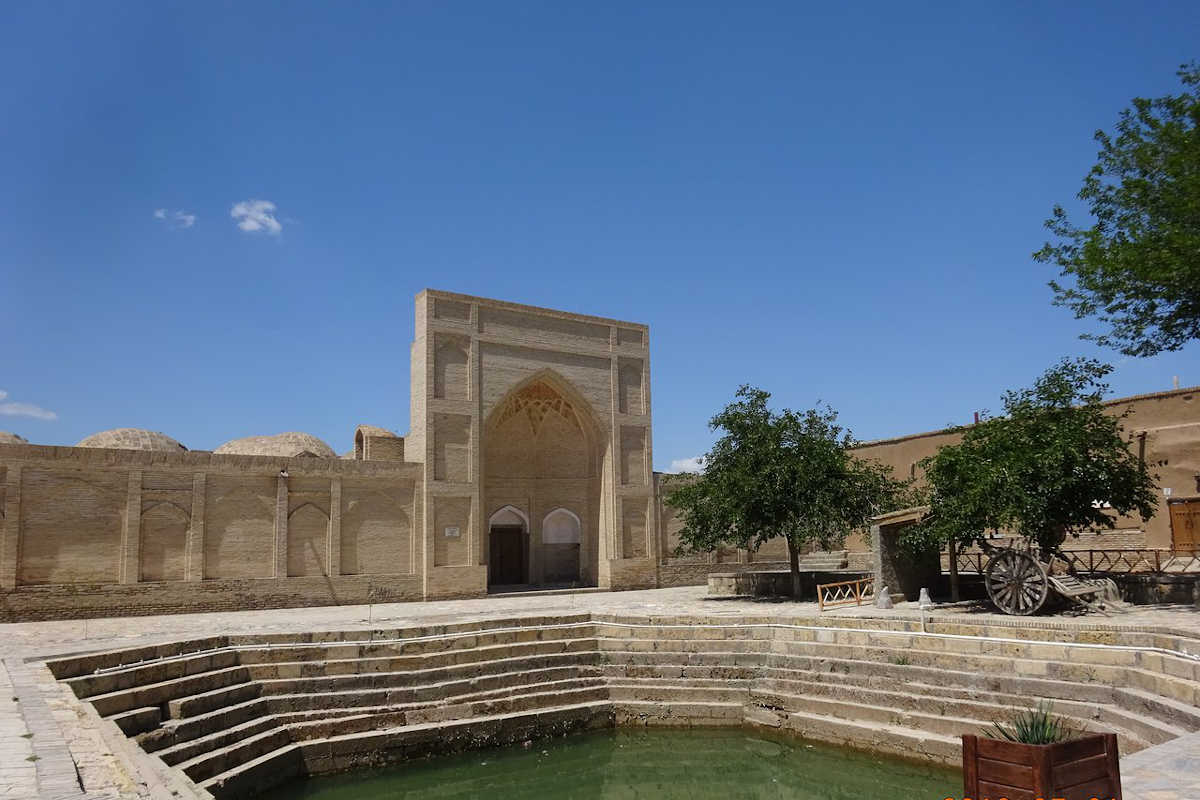Bukhara - Hodja Gaukushon Ensemble
In the historical centre of Bukhara there is the architectural Hodja Gaukushon Ensemble, whose construction dates back to the XVI century. The name of this ensemble is quite interesting: “Gaukuschon” literally means “bull murderer”. It can be explained by the fact that in the past there was a huge market with a slaughterhouse. This large area was already used as a trading place in the past. Under the new rulers of the Shaibanid dynasty in the XVI century, the rapid development of Bukhara began and the construction of many unique architectural structures, which have survived to this day. Under the Shaibanids, the construction of new religious buildings began on Gaukushon Square – a large madrasah and a Jome Mosque with a high minaret appeared here.

The idea for the foundation of this ensemble came from Sheikh Hodja Saad of the revered Juibar family. He provided funds for the construction of large and important buildings and became the main supporter of the project. His name was subsequently added to the name of the mosque and the entire complex as a sign of respect and gratitude. The Sheikh was also called “Hodja Kalon”, which means “Great Hodja”, so the structures of the complex are sometimes called “Hodja Kalon”. The Sheikh of Hodja Saad himself was buried in the tomb of Chor-Bakr together with all the members of his family dynasty.
The large architectural Hodja Gaukushon Ensemble in Bukhara, together with other buildings of the historical part of Bukhara, is on the UNESCO World Heritage List. Now there are souvenir shops with goods for tourists near the Medrese and there is a restaurant near the square. Travellers who have visited the complex notice that some parts of the buildings look a bit neglected despite the restoration works that have been carried out.
Hodja Gaukushon Ensemble in Bukhara consists of a madrasah of astonishing beauty and a Djomé Mosque (Cathedral) with an impressive minaret, which in height is only inferior to the famous minaret of Kalon, one even believes that the minaret of Hodja Gaukushon Ensemble in Bukhara is a scaled-down copy. The decoration used for the decoration of the Hodja Gaukuschon complex is a two-colour Ganch decor.
The madrasah is a Muslim educational institution whose graduates can enter higher education institutions. On the Gaukuschon square a building was erected according to a traditional court scheme in a typical oriental style. The madrasah is a two-storey building with vaulted Hudschras. The building itself has the shape of a correct trapezium, as it was located at the crossing of several streets. It was built in the middle of the second half of the XVI century – 1570 under the ruler Abdullah Khan II from the dynasty of the Shaibanids. Here students studied the history of Islam, Arabic, Sharia and the Koran.
Almost thirty years later, in 1598, a mosque called “Masjid Djome Hodja” was built on the square north of the Gaukushan madrasah. The Hodja Mosque was a Djome Mosque (Cathedral Mosque), also known as “Djuma Mosque” or “Friday Mosque”. In other words, there was Namaz, the collective midday prayer of the faithful of the Muslim community, which takes place on Fridays. The mosque could accommodate several thousand people. Most of the believers were housed in a courtyard with vaulted galleries under domes supported by brick pillars. The main building, the maxura, is located in front of the mihrab, a niche in the wall facing Mecca.
Between the mihrab and the mosque there is a minaret reflected in the water of the house, a hydro-technical structure of the artificial reservoir type, which serves as a drinking water reservoir. Travellers write that the water reservoir is kept in a clean and good condition, it is pleasant to sit and rest after the walk. The minaret is made of baked bricks and has a conical shape. The foundation consists of stone with bundles of wood around it. Inside, a spiral staircase leads to a rotunda lantern with a dripstone cornice. The minaret has 12 window openings.
